 Powers of the same quantity are divided by subtracting the exponent of the divisor from that of the dividend ; the remainder is the exponent of the quotient. Powers of the same quantity are divided by subtracting the exponent of the divisor from that of the dividend ; the remainder is the exponent of the quotient.  Elements of Algebra - Page 196by William Smyth - 1833 - 280 pagesFull view Elements of Algebra - Page 196by William Smyth - 1833 - 280 pagesFull view - About this book
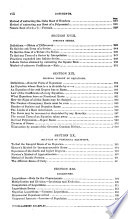 | Elias Loomis - Algebra - 1855 - 356 pages
...the preceding Article, i 3 3 Hence a root is divided by another root of the same letter or quantity, by subtracting the exponent of the divisor from that of the dividend. Ex. 1. Divide (aVf by (aVf. Ans. (ab)\ Ex. 2. Divide a:' by a*. Ex. 3. Divide or by a*. ii Ex. 4. Divide... | |
 | John Ogilvie - English language - 1855 - 434 pages
...[See EXPONENT.] Powers of the same quantity are multiplied by adding their exponents ; and divided by subtracting the exponent of the divisor from that of the dividend. Powers are considered as negative or /где/tona/, according as they have negative or fractional exponents;... | |
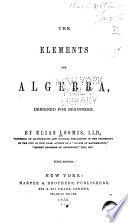 | Elias Loomis - Algebra - 1856 - 280 pages
...following , RULE OF EXPONENTS IN DIVISION. (71.) A power is divided by another power of the same root, by subtracting the exponent of the divisor from that of the dividend. Examples. (1.) (2.) (3.) (4.) Divide a" a1 b' c" by a^ a? .^ £ Quotient a" (5.) (6.) (7.) (8.) Divide... | |
 | William Smyth - Algebra - 1858 - 344 pages
...expression a~ 2 must therefore be regarded as equivalent to —^. • Q> a" In like manner m + , gives by subtracting the exponent of the divisor from that of the dividend a~"; but the fraction a m 1 a m + " a" • gives when reduced to its lowest terms — ; whence a ~"... | |
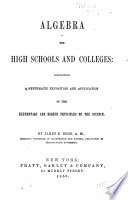 | James B. Dodd - Algebra - 1859 - 368 pages
...a, factor with this exponent may therefore he canceled. For example, a2 -Ha2 gives the quotient o°, by subtracting the exponent of the divisor from that of the dividend. But any quantity contains itself once, and therefore o2 -=-a2 also gives the quotient 1 ; and these... | |
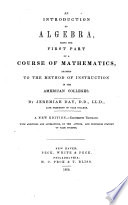 | Jeremiah Day - Algebra - 1859 - 422 pages
...and divisor is equal to the dividend. 115. A POWER is divided by another power of the same letter, by subtracting the exponent of the divisor from that of the dividend. Thus the quotient of a* divided by a* is a3. For a3 multiplied into aj will produce a". See Art. 92... | |
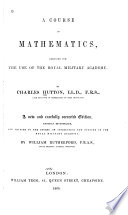 | Charles Hutton - Mathematics - 1860 - 1020 pages
...suppress the greatest factor common to the two coefficients. 17. Powers of the same quantity are divided by subtracting the exponent of the divisor from that of the dividend, and writing the remainder as tltf exponent of the quotient. Thus a' = aaaaaaa; a4 = aaaa a' aaaaaaa... | |
 | Thomas Sherwin - 1862 - 252 pages
...a^ 6*". Hence, 2 a* 6* . 7 a* $ = 2 a$ b^ . 7 a*6^ = 14 a^ 5«*. 5. Divide nfi by m^. This is done by subtracting the exponent of the divisor from that of the dividend. Thus, — = m* * = 6. Divide 6 m z by 2 m z. In this case we reduce the exponents of the same letter... | |
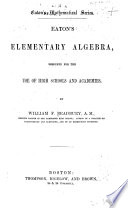 | William Frothingham Bradbury - Algebra - 1868 - 270 pages
...-^- a2 = a3 For as X a" = a5. (Art. 50.) Hence, Powers of the same quantity are divided by each other by subtracting the exponent of the divisor from that of the dividend. (3.) (4.) 27a;2y2 48a*xy - = 3xy - = — Say 9 xy — 16 ax (5.) (6.) — 276 3? y — 16a2x*yz -•... | |
 | Lorenzo Fairbanks - 1875 - 472 pages
...adding their exponents. Thus, 71 x T = 7'. A power may be divided by another power of the same root, by subtracting the exponent of the divisor from that of the dividend. Thus, 13* -t- 13" = 13. A fraction may be raised to any power, by raising each of its terms to that... | |
| |